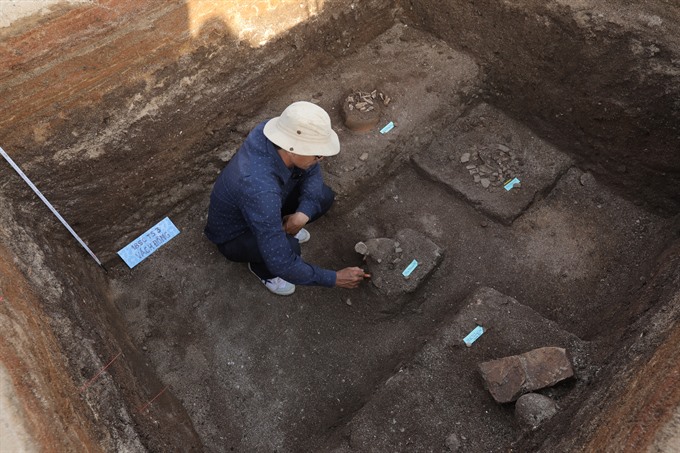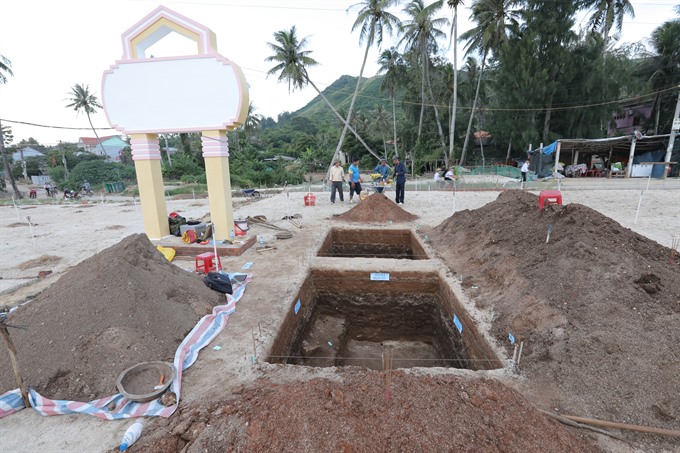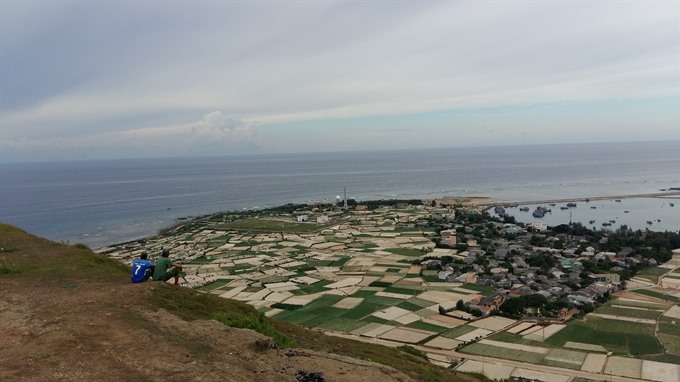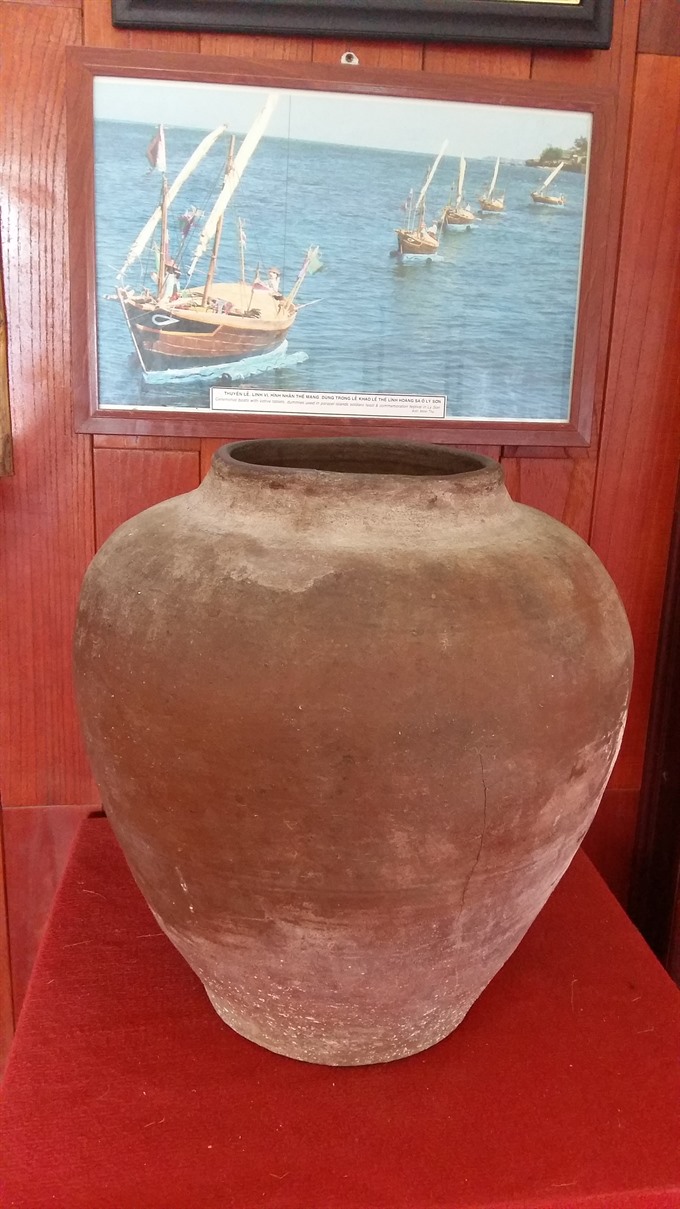 Life & Style
Life & Style

Archeologists from Quảng Ngãi museum and Archaeology Institute have found six ancient tombs and jewellery dating back about 2,000 years.
 |
| An archeologist digs up an ancient tomb in Lý Sơn Island, off the coast of Quảng Ngãi Province. The excavation unearthed six ancient tombs dating back from Sa Huỳnh Culture. — Photo courtesy Đoàn Ngọc Khôi |
LÝ SƠN ISLAND — Archaeologists from Quảng Ngãi Museum and the Archaeology Institute have found six ancient tombs and jewellery dating back about 2,000 years.
The excavation at the Chình stream on Lý Sơn Island, 30km off mainland Quảng Ngãi Province, uncovered tombs believed to belong to Sa Huỳnh culture communities between the first and second century AD.
Đoàn Ngọc Khôi, deputy director of Quảng Ngãi Provincial Museum, told Việt Nam News the excavation last month was seen as preparation for a larger excavation in 2019, and the digging covered only 10sq.m.
He said these tombs contained remains of children, glass beads, earrings and necklaces made from seashells.
“It’s more evidence that the community of Sa Huỳnh Culture (2,500 to 3,000 years ago) had lived and existed on the islands a long time ago. They built up a community to inherit culture of Sa Huỳnh from the mainland,” Khôi said.
 |
| Two holes dug up in Lý Sơn Island to seek evidence of the existence of Sa Huỳnh Culture. — Photo courtesy Đoàn Ngọc Khôi |
He said the first excavation from 2000-05 unearthed axes, chisels, knives and hoes made from stone, bronze and iron.
“We just dug up two holes on the expanded excavation area to ensure it retains antiquities for mass digging next year,” he explained.
The archaeological researcher said the digging will contribute more documents and objects to the process of recognising Lý Sơn as a Global Geo-Park in the coming years.
“We could strongly confirm that the Sa Huỳnh culture a long time ago appeared on the island and our ancestors had moved to far islands thousands years ago,” he said, adding the excavation on Lý Sơn Island once again proved Việt Nam’s sovereignty over the islands and archipelagos.
According to Quảng Ngãi Museum, living quarters in Ốc Village and Chình stream in An Hải commune of the island are two sites with abundant relics and antiquities left from Sa Huỳnh Culture.
Chình stream, situated at the foot of Thới Lới Mountain, was a main freshwater source for Sa Huỳnh people.
 |
| A view from Thới Lới Mountain in Lý Sơn Island. — VNS Photo Công Thành |
Earlier this year, experts from the Việt Nam Institute of Geosciences and Mineral Resources also found a unique complex of fossilised coral believed to date from 4,000 to 6,000 years ago on Lý Sơn Island.
Lý Sơn Island is a dormant volcano, and the terrain of the island was created from eruptions 25 to 30 million years ago, leaving landscapes with rocks, caves, cliffs and a lake.
The island has abundant relics related to the Sa Huỳnh, Champa and Đại Việt (or Great Việt) cultures that existed on the island for thousands of years.
Experts from the Việt Nam Institute of Geosciences and Mineral Resources and archaeologists from the National Heritage Council and Archaeology Institute have been compiling documents to UNESCO for Geo-Park status recognisation of Lý Sơn Island and a large area above and under the sea and land from Lý Sơn Island to the districts of Bình Sơn, Tư Nghĩa, Nghĩa Hành, Mộ Đức, Ba Tơ, Sơn Hà, Tây Trà, and Sa Huỳnh.
 |
| A ceramic jar in a museum on Lý Sơn Island. — VNS Photo Công Thành |
Setsuya Nakada, who is chair of the Advisory Committee of the Global Geo-Park Network, said the central province is an abundant site of heritage values with a mixture of culture and geology diversity, and it could be promoted as a geo-park site.
The island is a tranquil destination with 21,000 inhabitants, most of whom make their living from farming garlic and spring onions and fishing.
Centuries-old houses on the island have been preserved, as has the Âm Linh Pagoda, built to worship the souls of sailors who died during long voyages to the Hoàng Sa (Paracel) and Trường Sa (Spratly) islands in the Nguyễn dynasty (around the 17th century).
A local museum displays more than 200 ancient documents and 100 exhibits that prove that the Paracels and Spratlys belong to Việt Nam. — VNS




